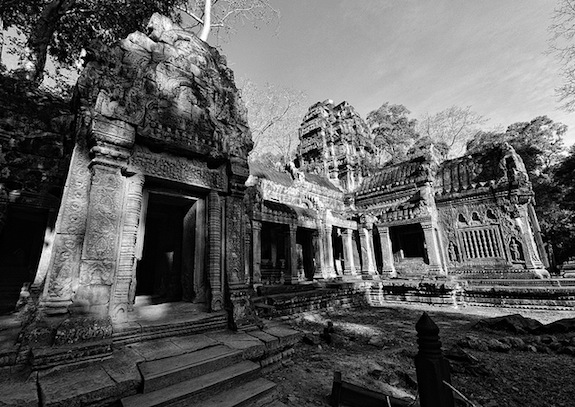Tomb Raiding Is Still a Huge Problem
A huge proportion of archaeological sites have been ransacked

Image: Hansel and Regrettal
You might think of tomb raiders as a relic, a quirk of Indiana Jones movies and Harvey Brothers books. But tomb raiding is quite alive today and still presents a huge challenge to archaeologists trying to study ancient sites.
Recently, researchers who uncovered a pristine, 1,200 year old temple in Peru kept their find a secret for several months to try and ward of thieves. As SmartNews wrote last month, the lead archaeologist “was terrified that looters would make their way to the site, so he and his colleagues excavated the site in complete secrecy for months.” And, as Pacific Standard points out, that was the right call.
According to Trafficking Culture, a project dedicated to researching cultural looting, a huge proportion of archaeological sites have been ransacked. The project’s researchers did an aerial survey of different parts of the world high in archaeological sites. Between 1980 and 1992, 45 percent of sites in the Inner Niger Delta region of Mali had been damaged by illegal digging. Two sites had been completely destroyed. In Turkey, it’s worse. Ninety percent of the archaeological sites in the western region of the country that was once the kingdom of Lydia showed signs of looting. Fifty-two of those sites had been totally destroyed. In a 1983 study, over half the sites in Belize had been damaged, and nearly half the Buddhist shrines in Pakistan had been roughed up or destroyed.
In 2006, real life tomb raiders led real life archaeologists to a hidden Egyptian grave site that was over 4,000 years old. (The thieves and archaeologists both ignored a warning inscribed on the wall that anyone who violated the grave would be eaten by both a crocodile and a snake.) And in Italy, a ring of smugglers made good money selling their loot to museums for millions of dollars until they were busted. These sorts of stories are everywhere—where there is ancient stuff, there are thieves.
Because there are so many archaeological sites and so few people at each one at any given time, it’s hard to keep track of damage and looting. Trafficking Culture also includes methods for using Google Earth to try and identify looting:
In the past, it has been difficult to obtain reliable quantitative, longitudinal information “on-the-ground” about the extent and intensity of archaeological site looting. Most relevant data has been produced through archaeological field surveys, though these remain few in number and are too expensive to repeat at periodic intervals. High-resolution aerial and/or satellite imagery offers a means of identifying and assessing site damage from a distance, though to date the cost of obtaining suitable images has been largely prohibitive. Now, however, the satellite imagery made available on Google Earth is a relatively inexpensive resource that can be used for identifying and quantifying site looting through time.
In this image series, the project shows the sudden appearance of hundreds of holes in the ground at Apamea, in Syria, where looters dug for goods. Without constant monitoring, these sites will likely continue to be looted and archaeologists will probably continue to be secretive about their finds.
More from Smithsonian.com:
Guarding Petra
Picasso, Matisse and Monet Paintings Stolen From Dutch Museum
/https://tf-cmsv2-smithsonianmag-media.s3.amazonaws.com/accounts/headshot/Rose-Eveleth-240.jpg)
/https://tf-cmsv2-smithsonianmag-media.s3.amazonaws.com/accounts/headshot/Rose-Eveleth-240.jpg)